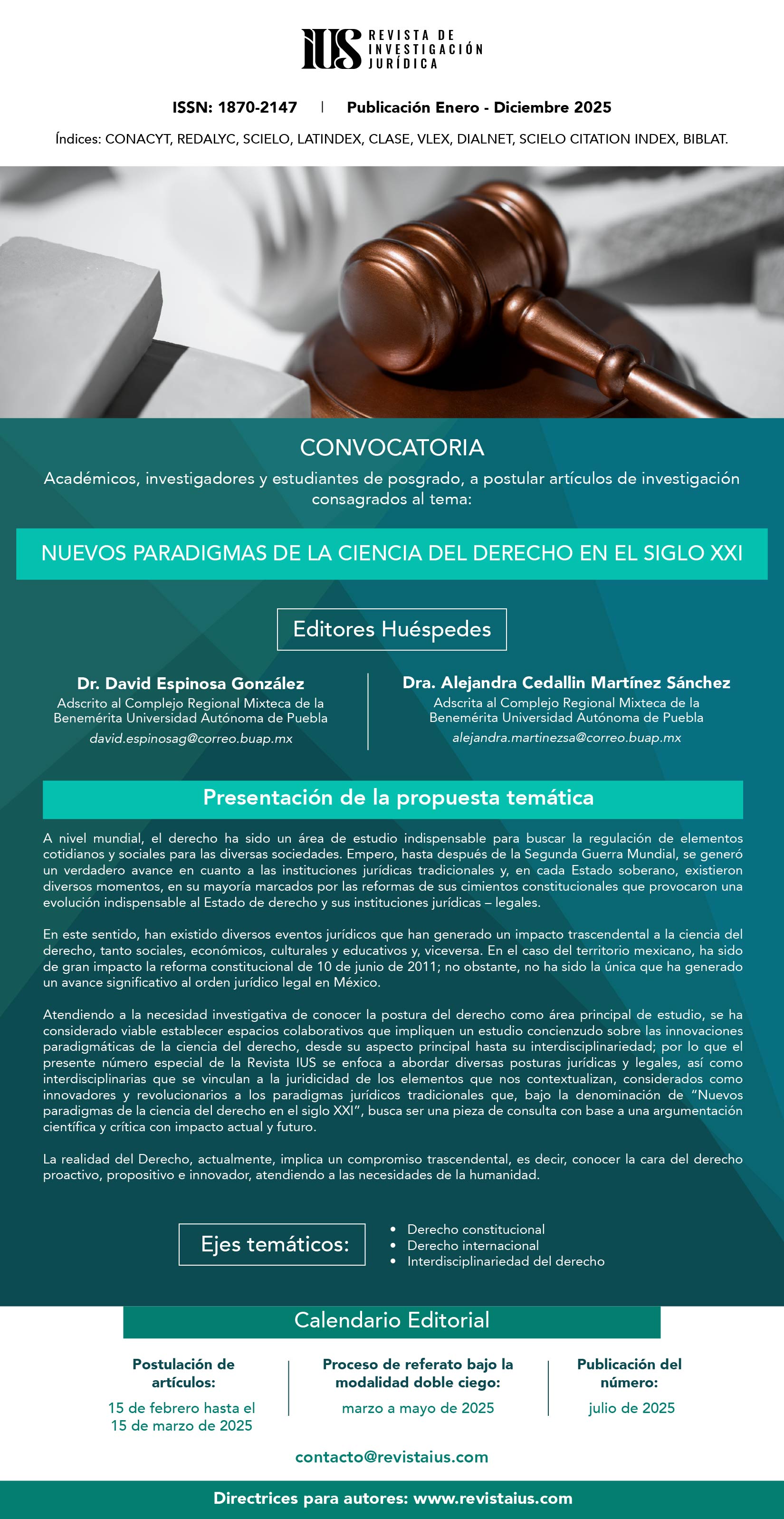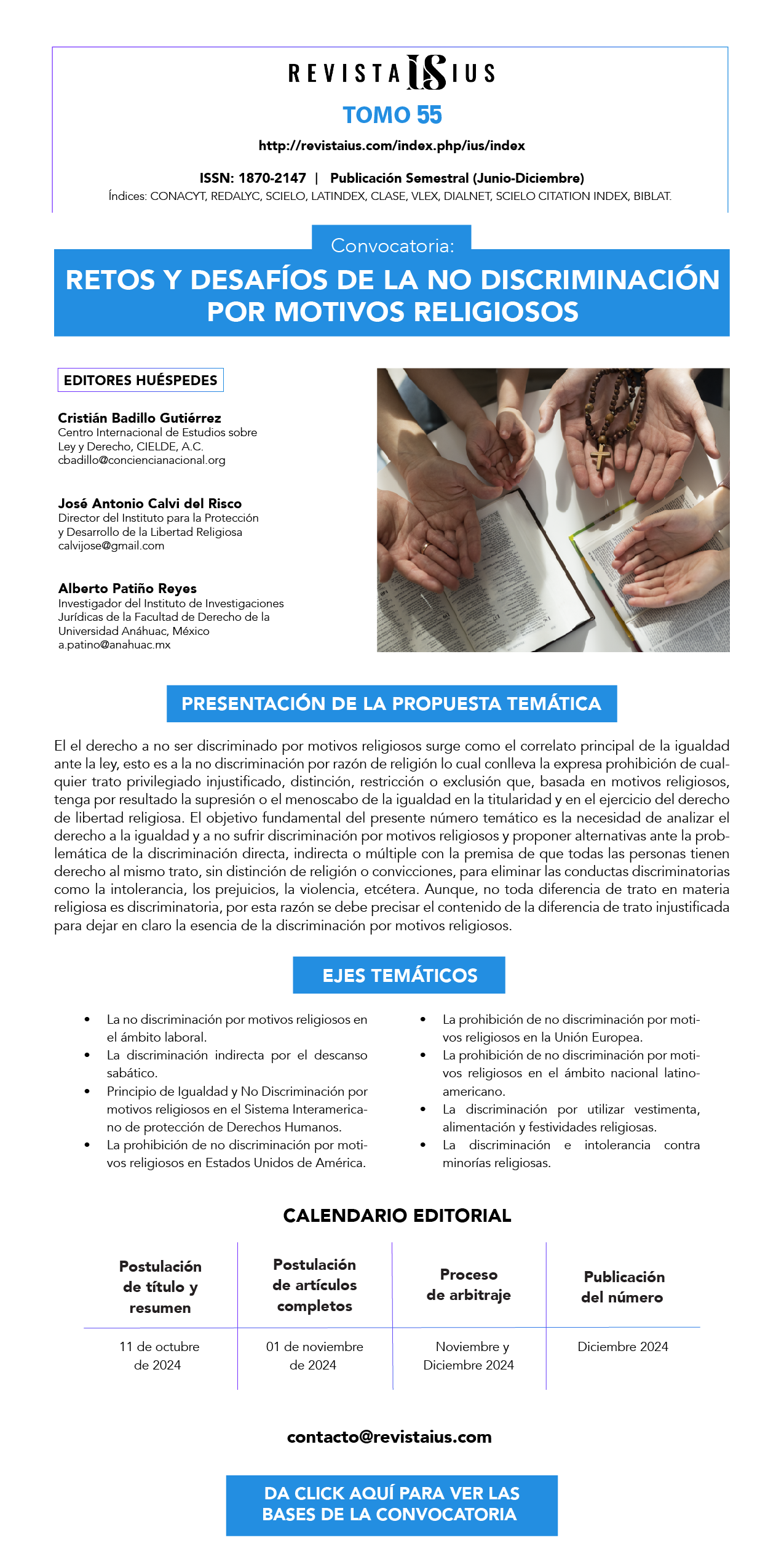The international human rights regimes: the gap between commitment and fulfillment
DOI:
https://doi.org/10.35487/rius.v11i40.2017.341Keywords:
human rights, international regime, international norms, international organs, commitment and compliance.Abstract
During the past seven decades, the international community has developed a dense set of international organs and norms for the promotion and protection of human rights in the world. This institutional machinery conforms what the International Relations literature would call an international regime”. To what extent has the international human rights regime achieved its objective—the promotion and protection of human rights? How well equipped is it to do so? Which are its assets and its main limitations? This article offers a preliminary approach to the arguments and the empirical evidence that the International Relations literature has developed around this issue. The article underlines the regime’s lack of “teeth” and the gap between commitment and compliance with international human rights norms and concludes with a discussion on the challenges faced by the regime to address its limited impact on state behaviour
in practice. KEY
Downloads
References
Anaya Muñoz, Alejandro, Hacia una metodología para la medición del cumplimiento de los Derechos Humanos en México, México, Universidad Iberoamericana, 2008.
Anaya Muñoz, Alejandro, Derechos humanos en y desde las Relaciones Internacionales, México, Centro de Investigación y Docencia Económicas, 2014.
Anaya Muñoz, Alejandro, “Indicadores de derechos humanos: tipos, métodos y bases de datos existentes”, en Ariadna Estévez y Daniel Vázquez (coords.), Derechos Humanos y Transformación Política en Contextos de Violencia, México, Flacso - cisan - unam, 2015.
Basch, Fernando, “La Efectividad del Sistema Interamericano de Protección de Derechos Humanos: Un Enfoque Cuantitativo sobre su Funcionamiento y sobre el Cumplimento de sus Decisiones”, Sur Revista Internacional de Derechos Humanos, vol. 7, núm. 12, 2010.
Cárdenas, Sonia, Conflict and Compliance. State Responses to International Human Rights Pressure, Philadelphia, University of Pennsylvania Press, 2007.
Cingranelli, David, Richards, David & Clay, Chad, Human Rights Data Project (ciri). [Consulta: 22 de febrero, 2017]. Disponible en: http://www.humanrightsdata.com
Donnelly, Jack, “International Human Rights: A Regime Analysis”, International Organization, vol. 40, núm. 3, 1986.
Hafner-Burton, Emilie & Tsutsui, Kiyoteru, “Human Rights in a Globalizing World: The Paradox of Empty Promises”, American Journal of Sociology, vol. 110, núm. 5, 2005.
Hasenclever, Andreas, Mayer, Peter y Rittberger, Volker, Theories of International Regimes, Cambridge, Cambridge University Press, 1997.
Hathaway, Oona, “Do human rights treaties make a difference?” The Yale Law Journal, vol. 11, núm. 8, 2002.
Krasner, Stephen, International Regimes, Cambridge, Cornell University Press, 1983.
Kromm endijk, Jasper, “Finnish Exceptionalism at Play? The Effectiveness of the Recommendations of un Human Rights Treaty Bodies in Finland”, Nordic Journal of Human Rights, vol. 32, núm. 1, 2014.
Landman, Todd, Protecting human rights: A comparative study, Washington DC, Georgetown University Press, 2005.
Lauren, Paul, “To Preserve and Build on its Achievements and to Redress its Shortcomings’: The Journey from the Commission on Human Rights to the Human Rights Council”, Human Rights Quarterly, vol. 29, núm. 2, 2007.
Lebovic, James H. y Voeten, Erik, “The Politics of Shame: The Condemnation of Country Human Rights Practices in the unhchr”, International Studies Quarterly, vol. 50, núm. 4, 2006.
Martín, Claudia, Rodríguez-Pinzón, Diego y Guevara, José Antonio, Derecho Internacional de los Derechos Humanos, México, Universidad Iberoamericana - Washington College of Law - Fontamara, 2004.
Neumeyer, Erik, “Do international human rights treaties improve respect for human rights?”, Journal of Conflict Resolution, vol. 49, núm. 6, 2005.
Open Society Initiative, From Judgement to Justice: Implementing International and Regional Human Rights Decisions, Nueva York, Open Society Foundations, 2010.
“Ratification Status Finder”, Oficina del Alto Comisionado de las Naciones Unidas para los Derechos Humanos. [Consulta: 17 de febrero, 2017]. Disponible en: http://tbinternet.ohchr.org/_layouts/TreatyBodyExternal/Treaty.aspx?-
CountryID=7&Lang=EN
Risse, Thomas, Ropp, Stephen y Sikkink, Kathryn, The Persistent Power of Human Rights. From Commitment to Compliance, Cambridge, Cambridge University Press, Cambridge, 2013.
Sepúlveda, Magdalena, et al., Human Rights Reference Handbook, San José, Costa Rica, Universidad de la Paz, 2004.
Simmons, Beth, Mobilizing for Human Rights. International Law in Domestic Politics, Cambgridge, Cambridge University Press, 2009.
“Status of Ratifications: Interactive Dashboard”, Oficina del Alto Comisionado de las Naciones Unidas para los Derechos Humanos. [Consulta: 17 de febrero, 2017]. Disponible en: http://indicators.ohchr.org/
Steiner, Henry J., Alston, Philip y Goodman, Ryan, International Human Rights in Context. Law, Politics, Morals, Oxford, Oxford University Press, 2008.
Downloads
Published
Issue
Section
License
Revista IUS, published by the Legal Sciences Institute of Puebla A.C., is distributed under the Creative Commons Attribution-NonCommercial 4.0 International (CC BY-NC 4.0) license.
We authorize collaborators to upload a copy of their published work on their personal websites or any Open Access repository, provided that Revista IUS is specifically cited as the original source, indicating the year and issue of the respective example and adding the link to the webpage on which this publication can be freely consulted in toto and without charge: http://www.revistaius.com
Readers are free to:
Share, copy and redistribute the material via any medium or format.
The licensor cannot revoke these freedoms as long as you follow the license terms.
Under the following terms:
Attribution: You must give appropriate credit, provide a link to the license, and indicate if changes were made.
You may do so in any reasonable manner, but not in any way that suggests the licensor endorses you or your use.
NonCommercial – You may not use the material for commercial purposes.
If you remix, transform or build upon the licensed material, its distribution is not permitted.
Charges for managing articles: Revista IUS will not charge for receiving, processing or publishing articles (Article Processing Charge, or APC) submitted by authors.





